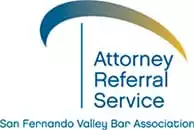Filing for Business Bankruptcy: Everything You Need to Know
How much do you know about business bankruptcy? If you’re on the brink of filing for bankruptcy or if you’re not sure if you need to file, then it’s always important to learn up on the latest tips before moving forward.
Read the helpful guide here!
Introduction
It’s an unfortunate fact of life: not every business turns out to be a success story. In fact, up to 20 percent fail before even finishing out year one. Those who do survive this important initial startup period don’t get off scot-free, either – another 50 percent will fail before they reach the five-year mark instead.
These numbers might seem dire, but they’re actually pretty broadly accepted as the standard in the business world. That’s why banks and investors are so careful about who they lend money to in the first place. They want to know you have a plan to survive those first few critical years without going under.
But what happens when going under is your reality? Is it better to shoulder the debt load out of your own pocket and move on? Or, is it better to declare bankruptcy in an effort to clear away your debt?
With coronavirus wreaking havoc on the economy, more and more business owners are finding themselves facing this important question. We’ll tell you what you need to know about this process, and how to decide if it’s right for you.
What Exactly is Bankruptcy?
The phrase “went bankrupt” is used so often in our society that you might, at least at first, think virtually everyone is out there declaring bankruptcy. But what people typically mean when they say this is really that they’ve run out of money.
Being “out of money” or “broke” isn’t the same thing as going bankrupt. The former describes a situation, while the latter is an actual legal term for a courts-based process used when you cannot pay your debts.
When someone declares bankruptcy, they are officially declaring their provable inability to pay creditors – usually due to extreme financial hardship. In the realm of business, this might mean having no money left to pay staff, being unable to cover rental fees, or even struggling to purchase critical daily operations supplies. It can, in many cases, also include being unable to make payments on business loans.
The eventual outcome of any bankruptcy is always the same: the debtor (or business owner) pays off as much or as little of their debts as they can afford while being allowed “relief” from punitive measures. Sometimes, other debts are written off, which grants the opportunity to make a “clean start.” This can be crucial when debts are so high there is absolutely no hope of overcoming them.
Why Businesses Declare Bankruptcy
Businesses declare bankruptcy for many different reasons. In some cases, day-to-day operations might not be viable anymore – or they may have never been viable from day one. This is the number one reason for bankruptcy in businesses across the United States. It only makes sense that a company who struggles to make money, and lacks capital, will eventually struggle to pay their debts.
Sometimes, the issue isn’t related to viability, but to solvency instead. A business is considered “solvent” when it owns or maintains enough assets to cover all current liabilities – even if those assets aren’t in cash (e.g, real estate).
The problem with solvency is that most business assets (including equipment and property) sell off at a loss. They can also take weeks or months to liquidate. This can leave the company insolvent, especially if lenders demand payment in full as a result of missed payments. The business is left scrambling to liquidate assets.
Bankruptcies can also occur because a business lacks enough liquidity – money freely available to pay for day-to-day operations (e.g., staff). If a business is putting every red cent back into paying off loans and mortgages, they will have nothing left to cover these important debts, which can cause a catastrophic crash.
Issues with solvency, liquidity, and viability often have a waterfall effect. A business that suddenly begins to struggle with viability, for example, will almost certainly start to struggle with liquidity a short time later. Insolvency often quickly follows.
Is Bankruptcy Right For Your Business?
Maybe – but it’s certainly not right in every situation. Bankruptcy comes with stringent requirements. Furthermore, it instantly brings your business’s credit rating down to an R9; this tells creditors you are probably unable to pay for any debts. It may become difficult or even impossible to access additional credit for several years because of this rating.
While this is not the type of decision you should ever make without talking to a lawyer, there’s nothing wrong with assessing your finances in the meantime.
Take a good, hard look at the books and run the math. Do your numbers line up? Are you liquid enough to be able to pay your bills? Are you able to pay your creditors successfully every single month? Do you already have collections agencies calling you – or are you already considering yet another loan?
If you struggle to answer any of these questions, don’t make any decisions from here on your own. Stop, contact a lawyer, and ask them whether bankruptcy is the right choice for your individual situation. The answer might be yes, but you may have alternatives available to you, too (such as working with creditors to resolve debts).
Types of Bankruptcy
There are three main types of bankruptcy in the business world: Chapter 7, Chapter 11, and Chapter 13.
Each of these addresses a slightly different scenario or provides the debtor with a slightly different benefit. It is critically important that you choose the right option for your individual business needs. Failing to do so can lead to the courts declaring your claims invalid – and that means you still owe all debts in full.
Chapter 7 Bankruptcy
In Chapter 7 bankruptcy, businesses must liquidate all assets within no more than four to six months. It is most often used by sole proprietorships, freelancers, contractors, and other “small business” realm companies.
The process of liquidation in a Chapter 7 bankruptcy can admittedly be rough, especially on the owner. A trustee is assigned to help sell off any assets determined to belong to the business. Meanwhile, the owner must reveal all available information about debts, assets, and expenses. The trustee investigates and determines whether creditors can be paid back partially or in full based on these numbers.
Why It Works: The main benefit of Chapter 7 is that it’s “quick and dirty.” Thus, it’s over faster, which can be a serious relief when you know the business has no real future. This lets everyone involved, including you, move on to new horizons.
Drawbacks: Chapter 7 bankruptcy always assumes that the company itself is ceasing operations. In fact, that’s a requirement for approval in the courts. There are also some situations where you may be considered partially liable for business debts (e.g, if you acted as a cosigner for a business loan).
Chapter 11 Bankruptcy
In Chapter 11 bankruptcy, businesses have the option to continue operations as long as they are actively working towards paying back debts. This may include restructuring finances or the business in its entirety. It is often preferred by larger businesses and corporations, mostly because it allows the business to remain viable even if they’re struggling with debt.
In order to be approved for Chapter 11 bankruptcy, businesses must submit a plan outlining all efforts to the courts. The courts will then decide whether or not it is sufficient and whether protection from creditors is warranted. This can be extremely complex – so much so that an owner filing on their own is almost unheard of.
Why It Works: There’s no need to shut down the business or put personal debts on the table. This is often ideal for businesses owned by more than one person. The courts may also allow the company to discharge a portion of, or all, unsecured debt.
Drawbacks: Chapter 11 does not discharge secured debts – they must still be paid, often by selling off assets. Furthermore, the process of restructuring can take months or even years, and the company must be monitored by the Trustee in the meantime.
Chapter 13 Bankruptcy
In Chapter 13 bankruptcy, the business is granted a specific period of time (usually three to five years) in which to reorganize, discharge, or renegotiate debts. It is, however, only available to sole proprietors and others who take individual responsibility for the business’s debts. For this reason, many people refer to it as “personal bankruptcy,” even when debts aren’t personal.
Chapter 13 bankruptcy differs in that it doesn’t necessarily discharge all debts. Instead, a trustee is assigned to help the debtor come up with an effective and affordable repayment plan. Instead of paying off creditors directly, the individual pays the Trustee instead according to their predefined plan. He or she uses the funds to prioritize and pay off debts in order of importance.
Assuming that the debtor adheres to the repayment plan, most other debts are discharged after it ends. This includes mortgages, loans, credit cards, and any business loans listed under the individual’s name.
Why It Works: Chapter 13 is often better for people, or businesses, who maintain enough income to pay debts back. It offers more wiggle room to make repayment affordable and also offers up total discharge for those who comply with the plan. It may also allow the debtor to surrender homes, vehicles, or other assets in an effort to reduce overall debts.
Drawbacks: This type of bankruptcy simply isn’t available to those who aren’t sole proprietors with both business and personal debt. Furthermore, the debtor must be able to prove that they have enough income to make payments on a regular basis. If someone is truly and completely “broke,” they probably won’t qualify.
Conclusion
Have questions about business bankruptcy that aren’t covered here? Reach out to a bankruptcy attorney today for help. You don’t have to go through this alone – and you shouldn’t be ashamed to ask for assistance. The faster you face your financial struggles head-on, the closer you will be to resolving them and getting relief.
Are you in search for a certified attorney to represent you?
Let us help you find one today!



